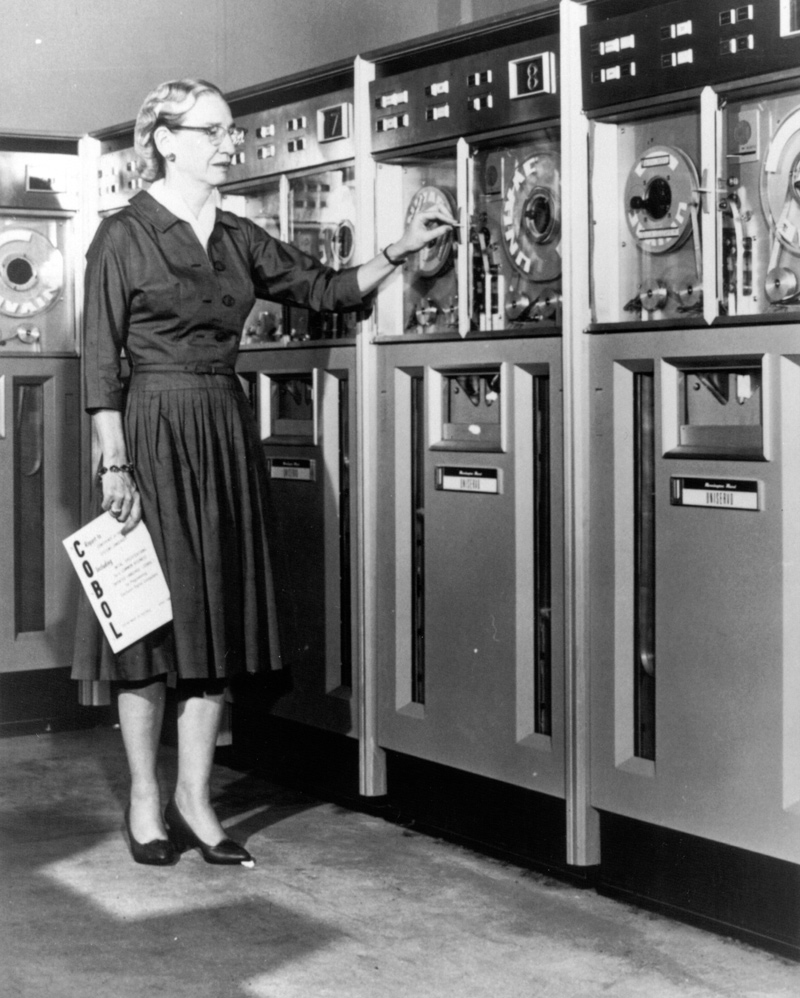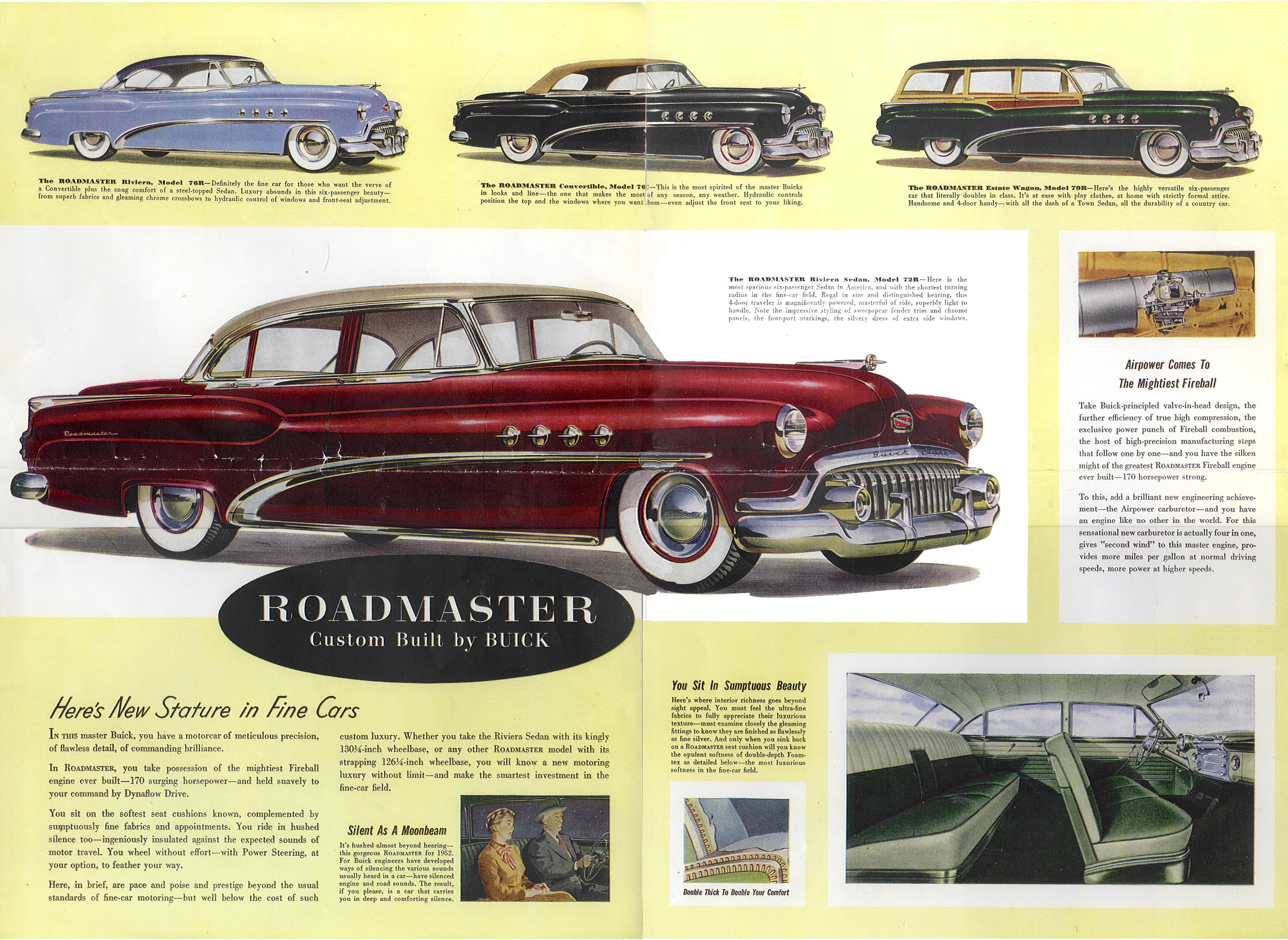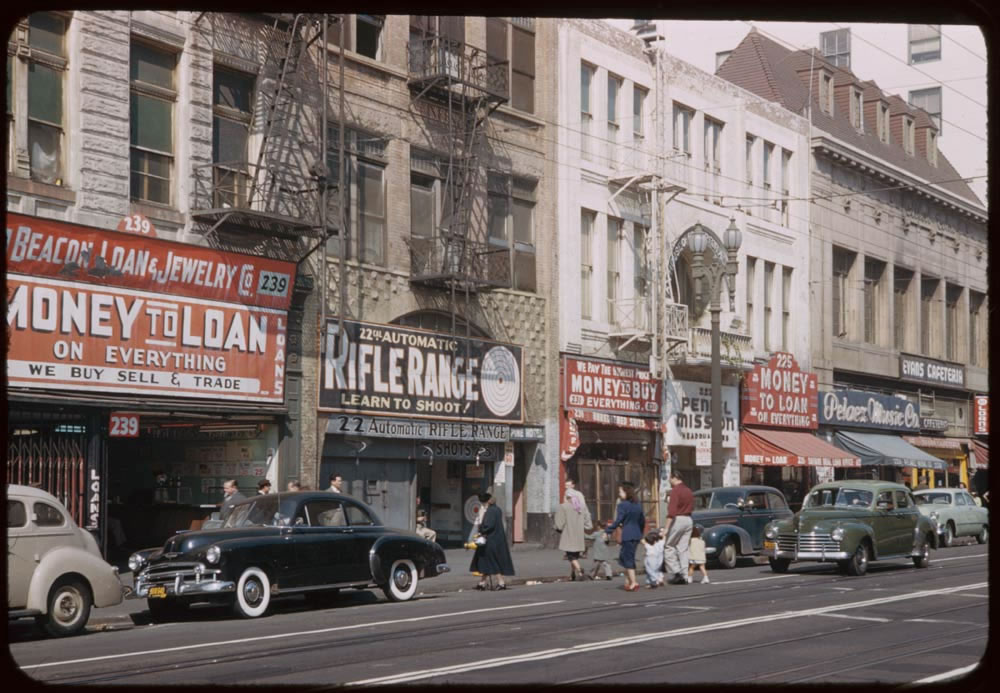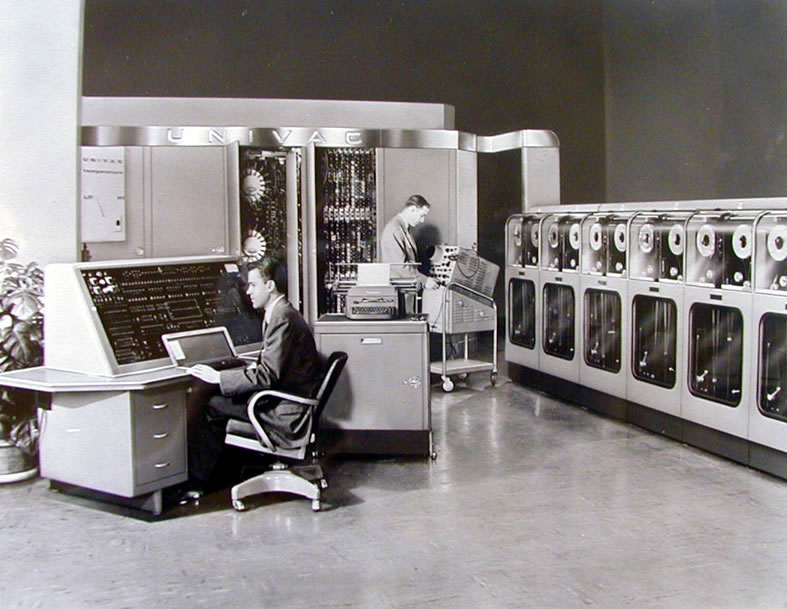America, 1951
At the turn of the century, shaken by his historian's vision of things to come, Henry Adams forecast a future in which "the new American-the child of incalculable coal power, chemical power, electric power and radiating energy, as well as of new forces yet undetermined-must be a sort of god compared with any former creation of nature."

Grace Hopper and her computers
In 1951, no one felt less like a god than the tax-burdened, world-involved American. But in 1951, with only 7% of the world's people, the U.S. produced 52% of the world's mechanical energy, and used it so wisely that it made 65% of the world's manufactured goods. In 1952 the U.S. achieved a gross national product of $350 billion, the greatest material outpouring in its history.
There were two even more important facts about the U.S. economy in 1952. It was the most stable year in the last decade. Despite the great production of goods, the limits of expansion were not reached.
In the first years after World War II, businessmen expanded to catch up with existing demand; in 1951 they expanded to meet future demands, on which they put no limits. U.S. business had climbed to what it thought to be a peak, only to find that it had reached a broad plateau and that the peaks were still ahead. The forecast for further expansion was not based merely on arms-spending. It was predicated as well on a continued and continually surprising population increase. In 1951 the U.S. population rose 3,000,000-50% more than estimates-to a new high of 157 million. And the new mouths were not considered liabilities, as in China, but new customers. Prosperity by population had become one of the most important dynamics of U.S. growth.
If the U.S. productive achievement was an overall triumph, it was seriously marred by one grave failure. The U.S. did not produce enough arms to meet its needs in Korea, to supply NATO, and to shore up the free world at all its other weak points. It even failed to turn out enough ammunition to supply the limited forces in Korea.
1951 In Images



